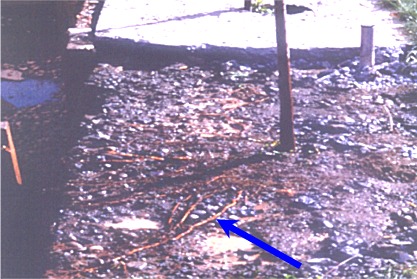

Makie Suzuki and Emily Bennett - Spring 2005 |
||
| Introduction | ||
Soils under pavement are highly compacted to meet adequate load-bearing requirements and to satisfy engineering standards. This compaction often creates a problematic situation for the growth of urban trees. Generally, an urban street tree is planted in a small pit surrounded by highly compacted soils. They do not have enough volume of soil, oxygen, water, and nutrients. This causes poor root growth and premature death of roots. The average longevity of urban trees surrounded by pavement is estimated to be only 7 years, while urban trees in tree lawns and narrow green strips on sidewalks live for up to 32 years. The same species in its natural environment is expected to live over 50 years.
Many urban trees can not establish themselves in a limited amount of soil surrounded by pavement, and will die soon after the transplantation. Even when the trees survive and are established, its root growth directly underneath the pavement often interferes with pavement integrity. This eventually causes pavement failure that is a safety hazard. Structural soil was invented to solve this issue between street structure and urban trees. The specification of the structural soils provides adequate load bearing for the street structure at the same time as allowing tree root growth into soils with enough aeration and usable water. In successful cases, the use of structural soils not only solves safety issues, but also improves strength and stability of the street structure by street tree root systems that are closely knitted together. |
||

